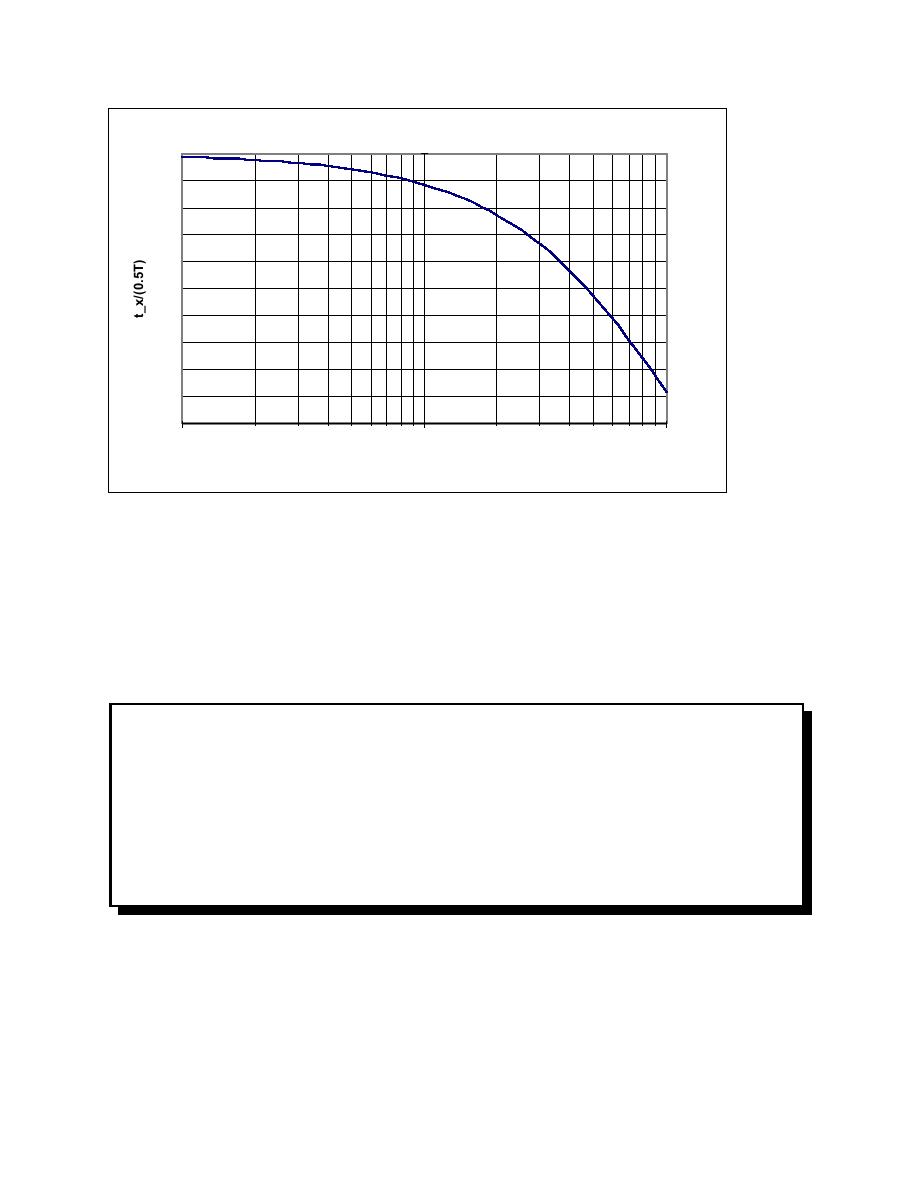 |
|||
|
|
|||
|
Page Title:
Intake and Dose Assessment for Mixtures of Radionuclides |
|
||
| ||||||||||
|
|  DOE-STD-1121-98
1
0.9
0.8
0.7
0.6
0.5
0.1
1
10
Tim e Betw een Bioassay Measurements, T (units of T1/2)
Figure 6. Time at Which Expectation Value of Intake Occurs as a Fraction of Interval
Midpoint for a Single Exponential Retention Function
7.4.2 Intake and Dose Assessment for Mixtures of Radionuclides
Mixtures of radionuclides can pose difficulties in assessment due to bioassay methods for different
nuclides having different sensitivities. When the isotopic composition of a mixture can be reasonably
known or assumed, an effective approach to bioassay and simplified intake and dose assessment can be to
select an indicator nuclide for the mixture and then base intake and dose assessments on the isotopic
activity ratios of each nuclide in the mixture relative to the indicator nuclide.
Example 7.1. Radionuclide Mixture: Sludge from Tanks Containing High Level Waste
High-level waste tank sludge mixtures may consist of predominantly mixed fission product radioactivity (mainly
137
Cs and 90Sr) with trace amounts of transuranics. From the bioassay perspective, the only readily detectable
nuclides may be the fission products. However, the contribution to total dose may be far more significant from
the minute quantities of transuranics. A logical nuclide for bioassay would be 137Cs because of its ease of
measurement by whole body counting and its relatively well-established biokinetic behavior. Detection of 137Cs
would result in estimating the intake of that nuclide using the standard biokinetic model for 137Cs in the total
body. Once the 137Cs intake was obtained, that result would be multiplied by the isotope ratio of each nuclide in
the mixture relative to 137Cs to give the intake of that nuclide. Doses can then be evaluated by calculating the
contribution from each nuclide intake.
When using indicator radionuclides and isotope ratios for mixtures, it is important to remember that
the activity ratio at the time of bioassay is not necessarily the same as the activity ratio at the time of
intake. If activity ratios in bioassay measurements at times following intake are being compared to those
in a smear sample or other source term sample, it is necessary to consider the differing biokinetic
behavior of the nuclides that are involved in the intake.
77
|
|
Privacy Statement - Press Release - Copyright Information. - Contact Us |